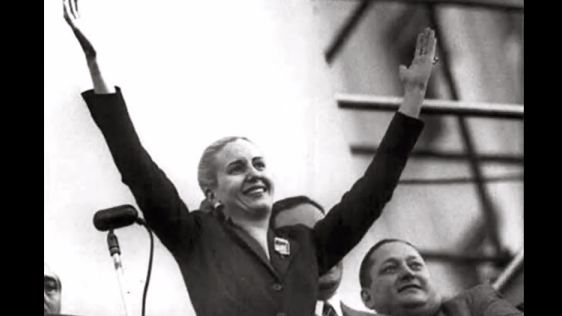SUMMARY
This is AI generated summarization, which may have errors. For context, always refer to the full article.

BUENOS AIRES, Argentina – Six decades after her death, memories of Eva Peron are still fresh for her millions of fans, fascinated by her dizzying social climb to the height of power and her dogged fight for the poor.
Evita’s July 26, 1952 death at the age of 33 shocked the nation, though some in wealthy neighborhoods welcomed the end of “that woman” they never called by her name.
A myth surrounding Eva made a dent on Argentine politics and changed it forever; her rise from poverty to the Pink House (the presidential mansion) underscored her enduring political message: “I deserve to make it, and so do you.”
Even today, President Cristina Kirchner regularly cites Evita, and displays a photograph in her office of Maria Eva Duarte de Peron, the glamorous second wife of president Juan Peron.
“In just 5 years of political life — a period as intense as it was brief — she was very active in community work and women’s right to vote,” historian Felipe Pigna told AFP.
“There is her youth, but also her aura of innocence, as she never had official responsibilities.”
Over 30,000 copies of Pigna’s biography “Jirones de su Vida” (Bits of Her Life), about Eva Peron’s ascent from street to chic and power, have sold in less than a month.
A musical on Broadway in New York City, Alan Parker’s 1996 film featuring Madonna and the captivating novel by Tomas Eloy Martinez “Santa Evita” (Saint Evita) have all kept the legend alive.
But when it comes to Evita, reality often stumps fiction, as illustrated by the millions of people who poured into the streets for a glimpse at her coffin after her death.
Evita met Juan Peron during a festival in 1944, when she was 25 years old. The following year, Peron launched a movement that made him govern Argentina for over 30 years. He had 3 terms as president (1946-52, 1952-55 and 1973-74).
When they first met, Eva Duarte was already a well-known radio soap opera actress who left her native city of Los Toldos at the age of 15.
The couple’s tour of Europe in 1947 raised Eva’s international profile and sealed her place firmly in the heart of Argentine politics.
Through her Evita Foundation, she launched a broad range of community and sports programs that improved the lives of millions of people, built 12 hospitals, over a thousand schools and numerous nursing homes.
Many Argentines remember receiving their first bike straight from Evita’s hands.
“Coming from a poor family, a down-to-earth girl who was a victim of discrimination, she really embodied self-sacrifice,” said Norberto Galasso, author of the recently published “La Companera Evita” (Evita the Militant).
“I will never forget life on the streets,” Evita used to say.
She ignored critics who were aghast that she hosted the poorest of the poor while decked out in pricey jewelry and the latest designer frocks.
An unrivaled orator who delivered impassioned speeches from the balcony of the Casa Rosada presidential palace, Evita secured the women’s right to vote in 1949. The legacy she left after her death has been compared to that of Marxist revolutionary Che Guevara.
Her face, like Che’s in Havana, still towers over the streets of Buenos Aires, including two sides of the Social Development Ministry.
Argentina on Wednesday unveiled a new 100 peso bill — equivalent to about US$22 — imprinted with the image of Eva Peron.
Issued in honor of the 60th anniversary of her death, the bill shows the late first lady in profile, her blond hair swept back into the classic chignon hairstyle she usually wore.
She died at the age of 33 from cervical cancer.
In 1955, the military that took over Peron’s rule removed her embalmed body (that was awaiting proper burial) from her former office in Argentina, and had her buried in secret in Milan under the name “Maria Maggi.”
The remains were only returned to Peron in 1971. It was not before 1976 that she was buried again, in Buenos Airies’ La Recoleta cemetery. – Oscar Laski, Agence France-Presse
In 1996, queen of pop Madonna played the title role in the movie “Evita.” Here is the clip where she famously sang the iconic, “Don’t Cry for Me, Argentina.”
Add a comment
How does this make you feel?
There are no comments yet. Add your comment to start the conversation.